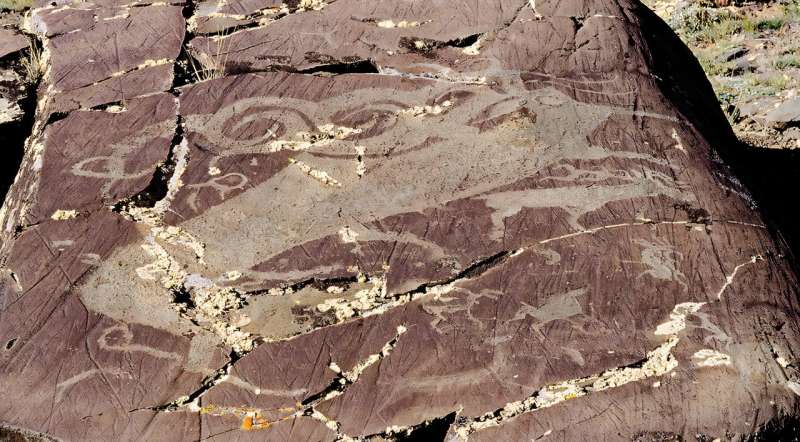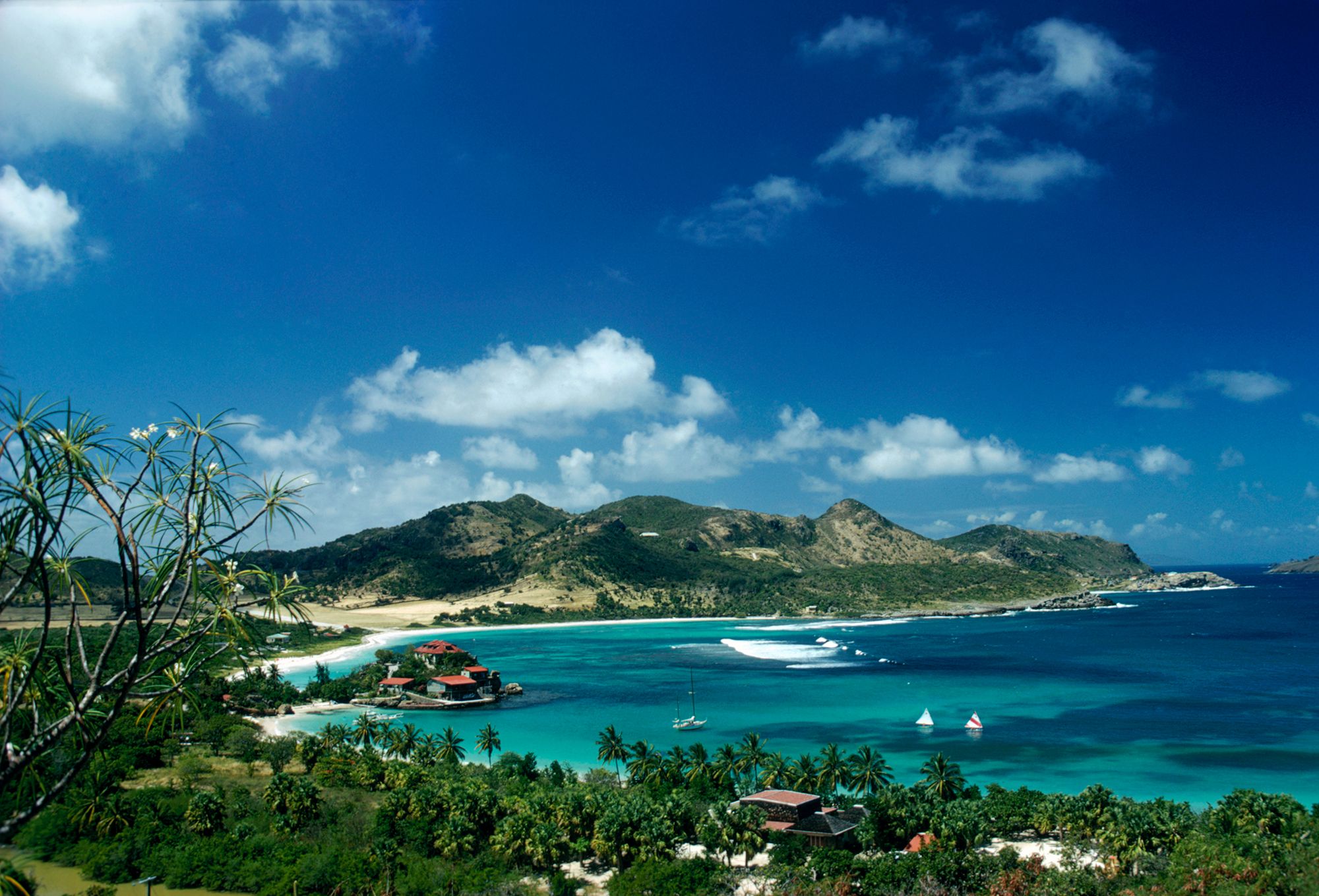Study Unveils Transformation of Ancient Elk Rock Art Into Distorted Wolf-Like Figures

July 13, 2025 feature
by Sandee Oster, Phys.org
contributing writer
edited by Sadie Harley, reviewed by Andrew Zinin
scientific editor
lead editor
This article has been reviewed according to Science X's editorial process and policies. Editors have highlighted the following attributes while ensuring the content's credibility:
fact-checked
peer-reviewed publication
trusted source
proofread
A recent study by Dr. Esther Jacobson-Tepfer, published in the Cambridge Archaeological Journal, explores the transformation of elk rock art in the Mongolian Altai. Her research sheds light on the possible factors that influenced these changes, leading to realistic elk images devolving into warped wolf-like beasts.
Elk are the second-largest animals in the Cervidae family, moose being the largest. Males are characterized by a pair of impressive antlers, which they shed annually. As mixed feeders, they require both grasses and browse to survive, hence preferring to live in forested areas or on the borders of forested environments.
Some of the earliest sporadic depictions of elk are in the form of pecked imagery, dating to the late Paleolithic period (approximately 12,000 BP). While it may be possible painted images once existed, Dr. Jacobson-Tepfer explains that painted images are rare and would not survive well in the Altai Mountains.
'There is only one set of painted images that has survived to the present, and they are in the cave known as Khoit Tsenkir, located in Khovd aimag (just south of Bayan Ölgiy). Given the weather and time that have lapsed since the Bronze and early Iron Ages, it would be impossible for painted imagery (i.e., pictographs) to survive in the open air, in the Altai Mountains.'
These early depictions of elk are realistic and naturalistic, often showing both males and females, sometimes together with their young. At times, they were shown together with other fauna which inhabited the surrounding landscape, including mammoths, woolly rhinos, and ostriches.
The art is characterized by static positions painted in profile (from the side) with the exception of legs (vestigial features), conveying direct realism.
With time, elk became less static, while still rendered in a realistic fashion, they became more alert, and images conveyed movement. Elk have become increasingly incorporated into the context of human activity, being depicted alongside hunters or in the midst of hunting scenes.
By the later Bronze Age, realism in elk representations began to fade, and artists began incorporating more stylized elk into their art. Elk began being depicted with more elongated bodies and exaggerated antlers. This stylization continued and became more excessive until the elk became highly abstract elk with elongated faces akin to bird beaks and wolf-like bodies.
According to Dr. Jacobson-Tepfer, these transformations coincided with paleoenvironmental changes, which in turn influenced socio-political structures.
During the late and mid-Holocene, the Eurasian steppe gradually became cooler and drier. This climatic trend led to the receding of forests. Due to this environmental change, elk were forced further west and northwest, together with the receding forests.
Hunters would need to move higher into the mountains for hunting grounds, while herders would have needed to drive their flocks further for new pastures. This shift is evident in art depicting scenes of families traveling together with their animals. Additionally, rock art locations start appearing increasingly at higher and higher elevations.
As the environment changed, people adapted to it by increasingly becoming semi-nomadic pastoralists, moving across large swaths of land. The transition is evident in the growing number and distribution of cemeteries, particularly in the Russian Altai and Mongolian valleys. Slowly, horses were adopted into the pastoral life, initially as load-bearing animals and finally as riding animals.
Increased movement and eventually, as mounted riders created a distance between people and their environments, more emphasis was placed on mounted individuals. This is evident in how these are often decorated with stylized animal motifs, marking a growing focus on personal and group identity, possibly tied to emerging social hierarchies.
Elk became less of a reflection of the natural world as they were seen by earlier hunter-gatherers and were adopted as symbols of rank, clan, and specific ideas.
By the Turkic Period, the image of the elk disappeared completely.
Written for you by our author Sandee Oster, edited by Sadie Harley, and fact-checked and reviewed by Andrew Zinin—this article is the result of careful human work. We rely on readers like you to keep independent science journalism alive. If this reporting matters to you, please consider a donation (especially monthly). You'll get an ad-free account as a thank-you.
More information: Jacobson-Tepfer, E. From Monumental Realism to Denatured Beast: The Transformation of the Elk Image in Rock Art of the Altai Mountains (Mongolia) and its Cultural Implications. Cambridge Archaeological Journal (2025). DOI: 10.1017/S0959774325000137
Journal information: Cambridge Archaeological Journal
© 2025 Science X Network




